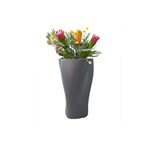Sustaining Nature in Urban Environments
With approximately half of the world's population living in cities, it's not surprising that in recent years architects and city planners alike, have been searching for new and innovative ways to preserve open green spaces. In this article we explore the various efforts that architects and urban designers are taking in order to provide us with a greener urban future.
Vertical Forest Movement
Perhaps one of the most well-known and remarkable projects is the Bosco Verticale Towers which are located in Milan, Italy and are designed by Boeri Studio. When the towers opened in October of 2014, they revolutionized what it meant to have green space in the city.
According to Twisted Sifter, the towers shown above have heights of 110 metres (360 ft) and 76 metres (249 ft) respectively and host 900 trees (each measuring 3, 6 or 9 meters or 10-30ft) and over 2,000 plants from a wide range of shrubs and floral plants. The living facade means that the exterior of the building is constantly evolving, changing colours, and offering residents an ever-changing view of the cityscape.
Since it’s completion, the Bosco Verticale has won multiple awards such as the "International High-rise Award" and the "2015 Best Tall Building Worldwide." The growing achievements of the building has led Stefano Boeri to pitch similar building designs to other areas of the world with it’s first in Asia slated for completion in 2018. If you're interested in learning more about the Vertical Forest movement, you can do so here.
Vertical Farms
While Stefano Boeri is focusing on vertical forests, some architects want to take sustainability one step further by introducing vertical farming that could alleviate some local demand on the produce supply in cities. Southern California designer Brandon Martella has designed the first vertical farm proposed for downtown San Diego. As part of the Live Share Grow community which is dedicated to reverse the harmful effects of urbanization, the development could potentially provide up to 10% of the city's produce and enhance the community with vibrant work spaces and living quarters.
Replacing What's Lost
While Apple is famously known for their tech products, they have been gaining even more attention because of their sustainable building methods. Despite Apple's Campus 2 being located in Cupertino, California, the approximately 7,000 trees being planted around the campus will make it look as if it is in the middle of a forest. In the video above you can learn more about their additional sustainable approaches and see progress on the building which opened in April 2017.
Mapping Out the Green
image © Pixabay
While it’s easy to learn about environmental initiatives from larger companies, it can be more difficult to find information regarding individual cities. Luckily, a tech company that was curious about green coverage, developed a website called Treepedia where you can see how green your city is. Their aim with the website is to create awareness of green initiatives and spark public interest in investing for more greenery in their town. If you’re curious about how green your city is, you can learn about it in our article here.
Rooftop Green Spaces
image © Pixabay
While the website acts as guiding force to get individuals thinking about green spaces, ultimately individuals want to see what initiatives have already taken place in their city. On their search, they are less likely to find one of the more elaborate plans like a vertical forest or an essentially replanted forest, but rather a rooftop green space. This is perhaps one of the most common ways that urban designers combat urbanization and a way that we can see continuing far into the future.
Browse 'green' on CADdetails.com.
Sources: Arch daily, The Globe and Mail, Dezeen, & Stefano Boeri Architetti Cover Photo: © Kent Wang












